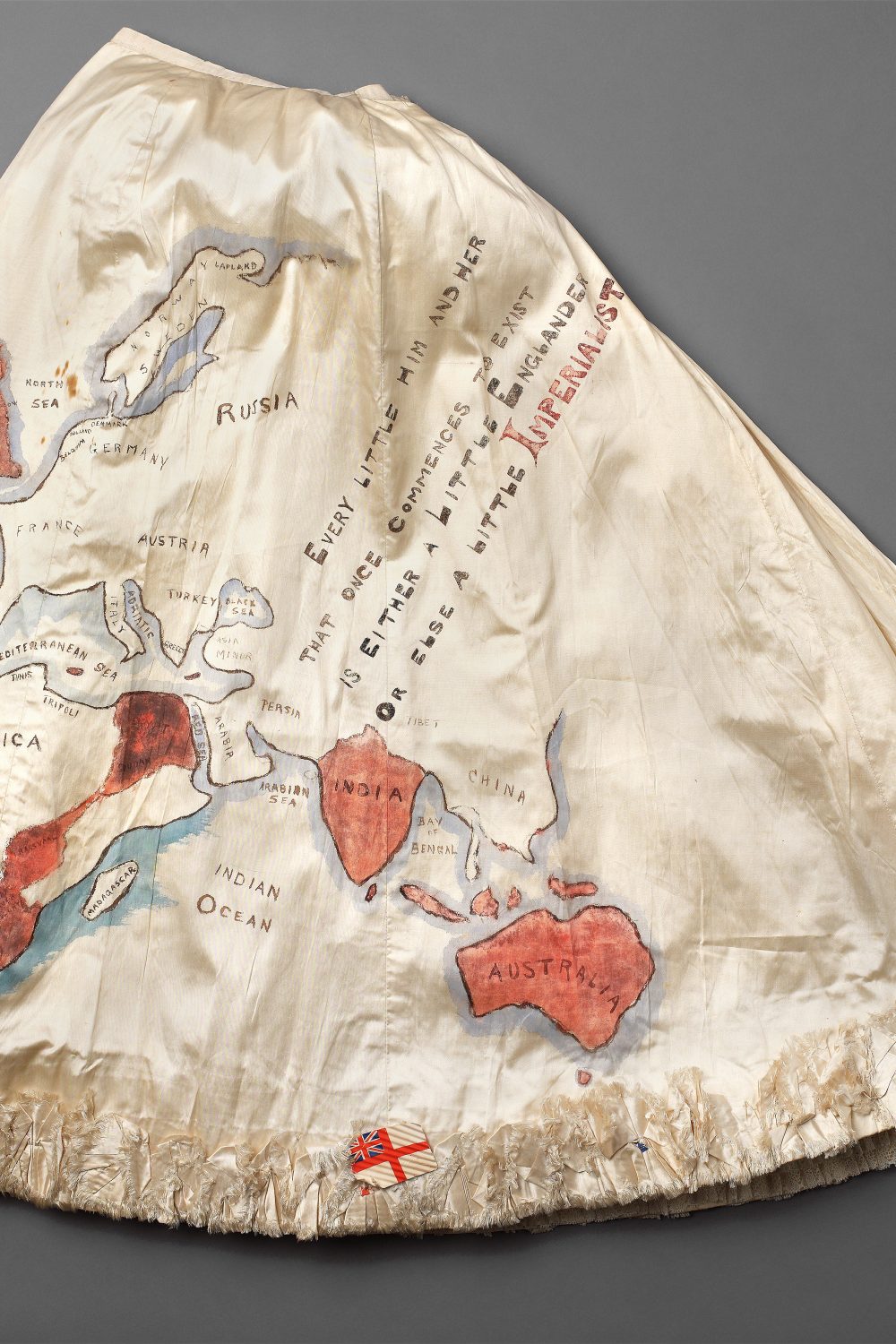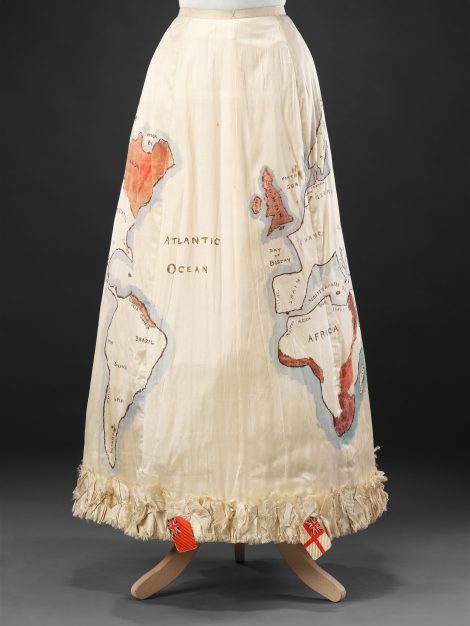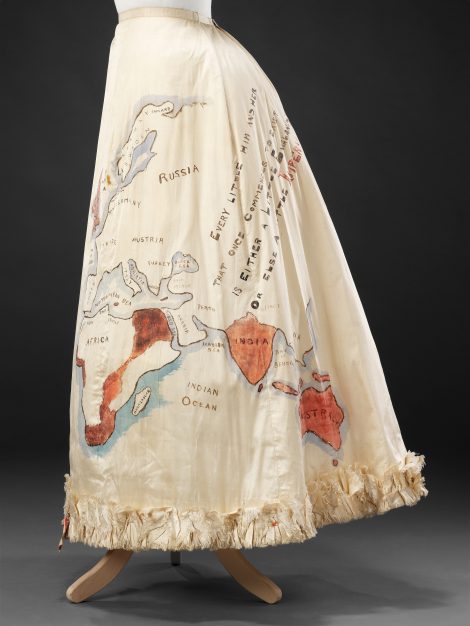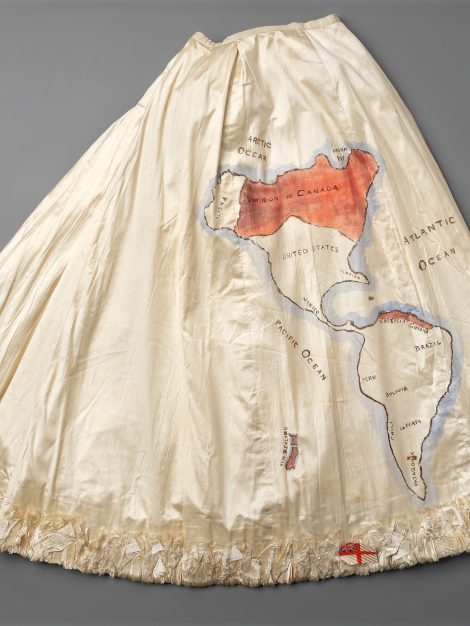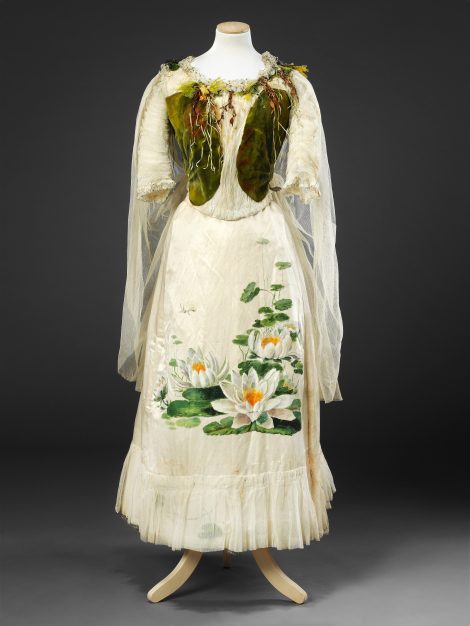Middle-class fancy dress of the late 19th Century and early 20th Century was often characterised by creative concepts that were achievable with simple means at home. Their inventive, sketchy themes contrast the perfectionism of aristocratic fancy dress that mainly drew its characters from history, classical mythology and literature, requiring the services of professional costume makers.
Two examples in the John Bright Collection, the ‘Lily Pond’ dress (see Related Item) and the ‘British Empire’ skirt were painted by hand, probably at home, albeit with very different subject matters. Other than the unobjectionable pond motif, the skirt’s design has a controversial political subject: The expansion of the British Empire. The cream satin of the garment is painted with a map of the world, each country outlined and named in black, the coastline in light blue, and the countries of the Empire filled in with pink. On the left side, the skirt is inscribed with the jingoistic verse:
‘Every little him and her/ that once commences to exist/ is either a Little Englander/ or else a little Imperialist’
A possible source for these lines can be found in a letter to the editor of ‘The Spectator’ of 27 December 1901. It jokingly suggests them as an update for the lyrics of the ‘Sentry’s Song’ from the Gilbert and Sullivan’s Iolanthe. A revival of this satirical 1882 operetta had opened at the Savoy Theatre on 7 December 1901. Its plot combines a Sylphide-like fairy world with that of the British parliament, and the revival inspired humorous comparisons between its characters and contemporary politicians in the press. The ‘Sentry’s Song’s musings on politics include this refrain:
‘That every boy and every gal / That’s born into the world alive / Is either a little Liberal / Or else a little Conservative!’
The skirt’s ‘updated lyrics’ imply that imperialism had become central enough to British politics to decrease the perceived importance of the traditional majorities ‘Liberal’ and ‘Conservative’. The political label ‘Little Englander’ was used for opponents of a further expansion of the Empire, particularly for critics of the ongoing Second Boer War (1899-1902). The map design features the South African Transvaal and the ‘Orange River Colony’, marking them as part of the Empire. These were the territories fought over in the Boer War. Their presence on the skirt might at first glance suggest it must have been painted after 31 May 1902, when their annexation was sealed in the Treaty of Vereeniging, but it was much earlier, in 1900, that Field Marshall Lord Roberts had unilaterally proclaimed the creation of the new colonies. The British public, including the owner of our skirt, might therefore have felt a sense of ownership before the actual end of the war.
The skirt is professionally made, with a stiffly dressed lining. Small paper white and red ensigns, flown to identify British military and civilian vessels, are attached to the hem, some now missing.
